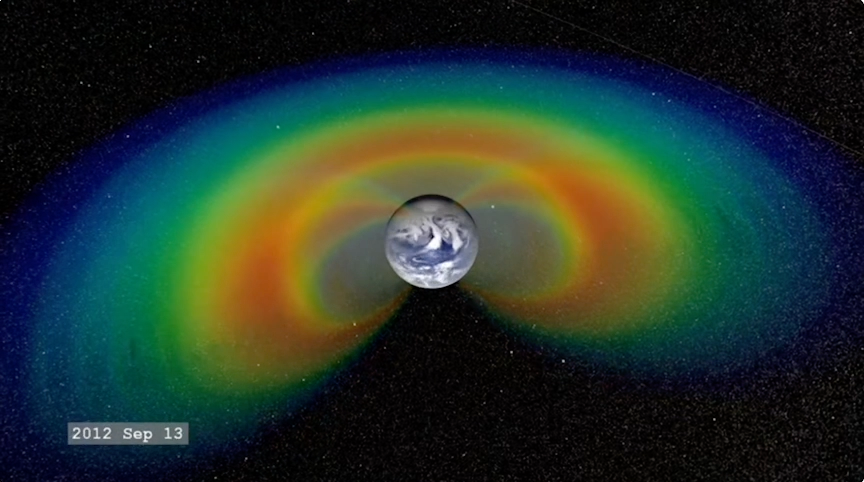
Below the Belts
On September 7, 1914, American space scientist James Alfred Van Allen was born. In the International Geophysical Year [July 1, 1957 to December 31, 1958] Van Allen reconfigured the radiation detectors he had designed for one rocket system to fly on a different system to launch the first U.S. Earth satellite, Explorer 1. He had fewer than 90 days.
Since there had been no time to mount recording equipment in the satellite, a series of ground observatories took the readings of transmitted data. Van Allen had predicted the instruments would detect electromagnetically dense areas around Earth as the satellite neared Earth’s poles. The Geiger counters fell silent. Another Explorer satellite was in the works and this time Van Allen was able to add a tape recorder to keep a complete record of radiation data on orbit. The taped record revealed a greater system of radiation around Earth than expected. The accumulated data pointed to two belts of radiation, separated by a small gap – an intense inner belt and a more diffuse outer belt. Van Allen realized the silence from the first radiation detectors came from instruments that were overcome by the intensity of the radiation.
As succeeding probes and satellites gathered and returned data, greater detail clarified the bands of radiation surrounding Earth. These Van Allen Radiation Belts are found at an altitude of about 1,000 to 25,000 kilometers (600 to 15,500 mi) above the Earth’s surface and held in place by Earth’s magnetic field. Their discovery added essential knowledge about how Earth works within our solar system.
Within a few months of the Van Allen Belts discovery, the National Aeronautics and Space Administration was established. Van Allen contributed instruments to Pioneer 10’s first survey of Jupiter’s radiation belts and then to Pioneer 11’s observations of Saturn’s belts. He was a member of the science team for the Galileo mission that studied Jupiter and its system of moons.
Among other recognition, Van Allen received the Kuiper Prize from the Division of Planetary Sciences of the American Astronomical Society and the William Bowie Medal of the American Geophysical Union.
B Bondar / Real World Content Advantage